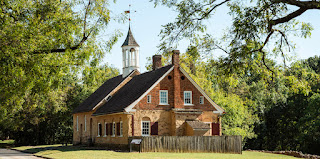Stepping Back in Time: A Visit to the Historic Village of Bethabara
Bethabara Village was a Moravian settlement established in 1753 in what is now Winston-Salem, North Carolina. The Moravians were a religious group that had fled persecution in their native Bohemia (in present-day Czech Republic) and settled in various parts of Europe and the Americas. The settlement at Bethabara was intended to be a hub for missionary work among the Native American tribes in the region. The village had a central square, a church, a gristmill, and a variety of other buildings, and was home to around 100 residents at its peak. The village was abandoned in 1788 when the Moravians moved their settlement to the nearby town of Salem. Today, the Bethabara Historic District, which includes several reconstructed buildings from the original village, is open to the public as a museum and historic site.
Bethabara Village was one of the first Moravian settlements in North Carolina and played an important role in the history of the region. The Moravians who settled at Bethabara were skilled craftsmen and farmers and they quickly established a thriving community. They built a variety of structures including a church, a gristmill, a tannery, and a number of houses. The village also had a central square that served as a gathering place for the community.
- The name “Bethabara” means “house of passage” in Hebrew, and was chosen by the Moravians because they believed that their settlement would serve as a waypoint for other Moravian communities in the region.
- The Moravians at Bethabara were known for their strong sense of community and shared ownership of property. They had a communal kitchen and dining hall, and all of the land and resources in the village were held in common.
- The village had a central square that served as a gathering place for the community. It was the site of many events, including religious services and social gatherings.
- The Moravians at Bethabara were skilled craftsmen and many of the objects they produced, such as pottery, textiles, and furniture, were of high quality and are now considered valuable antiques.
- Moravians at Bethabara had a strong focus on education, they had schools for children and adults where they taught reading, writing, math, and various crafts.
- Bethabara was one of the first settlements in North Carolina that had a hospital, which was called “The Sick House”. The Moravians at Bethabara were known for their medical skills and provided care for the sick and injured.
- The Moravians at Bethabara were known for their commitment to religious mission. They established a mission school for Native American children and worked to convert the local tribes to Christianity.







.JPG)

Comments
Post a Comment
Thanks for the comments!